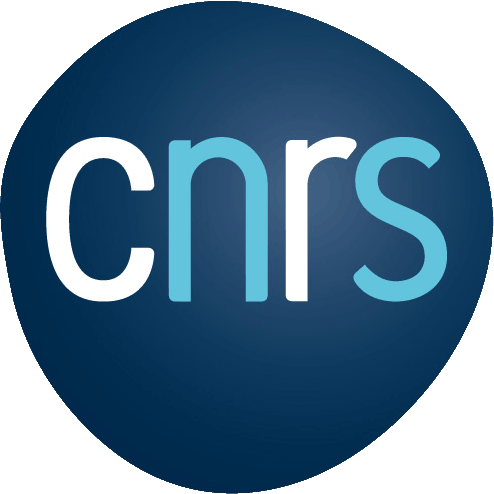Offre en lien avec l’Action/le Réseau : – — –/– — –
Laboratoire/Entreprise : U2IS / ENSTA Paris
Durée : 3 ans (tenure track)
Contact : goran.frehse@ensta-paris.fr
Date limite de publication : 2024-01-12
Contexte :
ENSTA Paris est un établissement public d’enseignement supérieur et de recherche sous tutelle du ministère des Armées. Elle a pour mission la formation d’élèves ingénieurs généralistes de haut niveau, d’étudiants de masters et de doctorat ainsi que la conduite d’activités de recherche. Elle est membre fondateur de l’Institut Polytechnique de Paris (IP Paris).
L’unité d’informatique & d’ingénierie des systèmes (U2IS) d’ENSTA Paris est particulièrement reconnue au niveau international pour son expertise dans le domaine de la robotique et des systèmes autonomes. Elle regroupe les activités de recherche et d’enseignement de l’École dans le domaine des sciences et technologies de l’information et de la communication. Elle développe des activités de recherche dans le domaine de la conception et de la fiabilité des systèmes intégrant des processus décisionnels autonomes avec des applications dans les domaines du transport intelligent, de la défense et de l’énergie. Les travaux de l’unité portent sur les problématiques de vision, robotique, intelligence artificielle, systèmes embarqués, traitement du signal et de l’image et de conception et d’analyse de systèmes hybrides.
Sujet :
Activités principales
Le titulaire du poste intègrera l’U2IS pour y développer son groupe de recherche en cohérence avec la stratégie et l’unité et participer aux enseignements gérés par cette dernière.
Activités de recherche
En termes de recherche, il est attendu des candidats d’être en mesure :
• de contribuer au développement et au renforcement de l’activité de recherche en intelligence artificielle de l’U2IS, et en particulier dans les domaines en lien avec la vision et la robotique ;
• de développer une activité de recherche partenariale avec les acteurs industriels partenaires d’ENSTA Paris ;
• de participer à la construction d’actions autour de l’intelligence artificielle au niveau de l’Institut Polytechnique de Paris.
La personne candidate devra avoir démontré sa capacité à conduire des activités de recherche aux standards internationaux dans l’un des domaines se reportant aux thématiques de l’équipe « systèmes autonomes et robotique » comme la mobilité en milieu structuré ou non structuré (navigation, contrôle, SLAM, …), l’interaction homme-robot, l’autonomie décisionnelle, les systèmes de systèmes, en utilisant notamment des techniques d’apprentissage automatique. L’activité de recherche devra s’inscrire en complément des activités déjà développées par l’unité, en particulier dans les domaines de l’intelligence artificielle, création de bases de données, large language models (LLMs), apprentissage profond. La personne recrutée disposera de la capacité, d’une part à mener des collaborations académiques (au niveau national et international), d’autre part à développer une recherche partenariale associant les entreprises.
Activités d’enseignement
ENSTA Paris forme des étudiants recrutés chaque année parmi les tout meilleurs (ENSTA Paris classée 4ème école d’ingénieur au classement de l’Etudiant). En termes d’enseignement, il est attendu :
• de contribuer à la mise en place d’un cursus par apprentissage spécialisé en intelligence artificielle ;
• d’enseigner dans les domaines d’expertise de l’unité au sein des différentes formations d’ENSTA Paris (cycle ingénieur, formations spécialisées) et d’IP Paris (masters et formation doctorale).
Pack d’accueil
La personne candidate retenue bénéficiera d’un « pack d’accueil » constitué :
– d’une bourse de thèse, ou deux demi-bourses de thèses (avec complément Hi!Paris ou CIEDS), pour engager des travaux de thèse dans son domaine de recherche dans les 18 mois qui suivront son recrutement ;
– d’une charge de formation réduite.
Profil du candidat :
Le poste proposé est un contrat à durée déterminée de 3 ans renouvelable une fois puis transformé à terme en CDI pour les candidats ayant démontré leur intégration et un bon niveau de réalisations académiques.
L’ENSTA Paris peut accueillir les personnels fonctionnaires en détachement, en particulier les Maîtres de Conférences et les Professeurs de l’université ou les Chargés et les Directeurs de Recherche des organismes de recherche (CNRS, INRIA, …). La qualification aux fonctions de Maître de Conférences ou de Professeur des Universités n’est pas requise mais sera appréciée.
Des candidatures « junior » ou « expérimentées » sont possibles. Un candidat expérimenté avec HDR pourra obtenir le titre de Professeur accordé par la commission d’appellation d’ENSTA Paris. Un salaire attractif sera proposé en adéquation avec le profil.
Formation et compétences requises :
La personne candidate, titulaire d’une thèse de doctorat, devra justifier :
• d’une expérience en recherche et enseignement en adéquation avec les besoins exprimés ;
• de publications scientifiques dans des revues de haut niveau et en lien avec la thématique mentionnée ;
• d’une capacité à travailler en équipe tant pour l’enseignement que pour la recherche ;
• de qualités pédagogiques ;
• de pouvoir prendre des responsabilités et notamment de pouvoir piloter/coordonner un parcours d’enseignement.
Adresse d’emploi :
ENSTA Paris
828, Boulevard des Maréchaux
91762 Palaiseau Cedex
Document attaché : 202311231415_ENSTA-U2IS-EC-Vision-IA-2024.pdf

